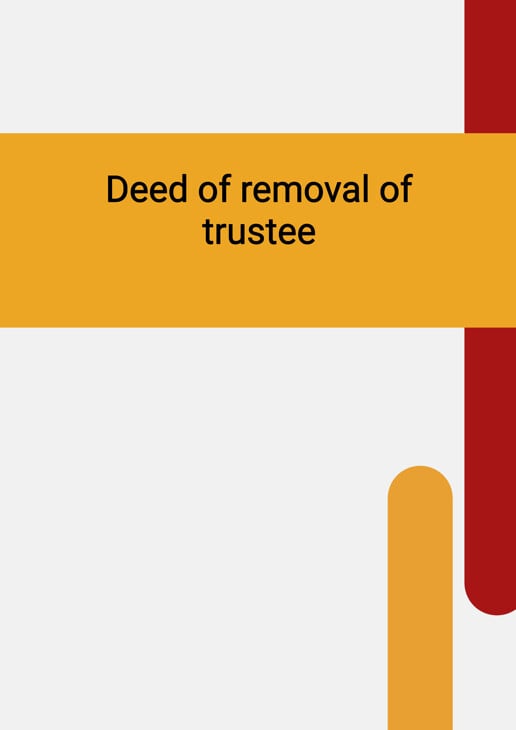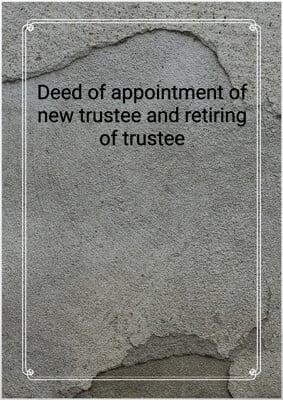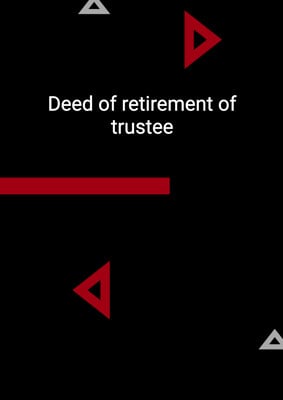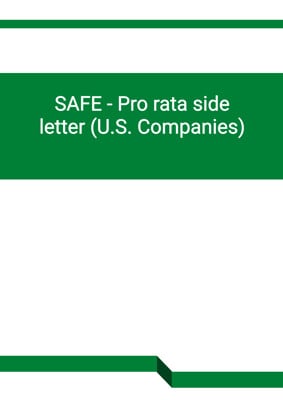How to Tailor the Document for Your Need?
01
Create Document
Fill in the details of the parties. You can click the "Fill with Member’s Information" button to complete it with information saved to your account.
02
Fill Information
Please fill in any additional information by following the step-by-step guide on the left hand side of the preview document and click the "Next" button.
03
Get Document
When you are done, click the "Get Document" button and you can download the document in Word or PDF format.
04
Review Document
Please get all parties to review the document carefully and make any final modifications to ensure that the details are correct before signing the document.
Document Preview
Document Description
The document titled 'Deed of removal of trustee' is a legal agreement that is entered into between two parties, namely the principal employer (referred to as Party 1) and the continuing trustee (referred to as Party 2). This deed serves as a supplement to the definitive trust deed and rules that govern a scheme known as 'name the scheme'. The purpose of this deed is to remove a trustee, specifically the individual named as 'firstname lastname address' (referred to as the removed trustee), from the trust and provisions of the scheme.
The document begins by providing a brief background and context for the deed. It states that the principal employer is the current principal employer in the scheme and is vested with the power to remove a scheme trustee as per the deed and rules. The principal employer has decided to exercise this power and remove the removed trustee.
The deed consists of three main clauses, each addressing a specific aspect of the removal process. Clause 1 states that with immediate effect, the principal employer removes and discharges the removed trustee from the trust and provisions of the scheme. Additionally, it states that the scheme assets shall now vest in the continuing trustees jointly.
Clause 2 clarifies that the deed can be executed in multiple counterparts, meaning that it can be signed by the parties on separate documents that together form a single instrument.
Clause 3 specifies that the deed is governed by the laws of the applicable jurisdiction and should be construed in accordance with those laws.
The document concludes with a section for the parties to sign, indicating their agreement to the terms of the deed. It also includes a schedule, referred to as Schedule 1, which lists the other deeds that are associated with the scheme.
In summary, the 'Deed of removal of trustee' is an important legal document that allows the principal employer to remove a trustee from a scheme. It outlines the process and consequences of the removal, as well as the subsequent vesting of scheme assets in the continuing trustees.
How to use this document?
To effectively use the 'Deed of removal of trustee' document, follow these steps:
1. Review the current trust deed and rules: Familiarize yourself with the existing trust deed and rules that govern the scheme. Understand the provisions related to the removal of a trustee and the powers vested in the principal employer.
2. Identify the trustee to be removed: Determine the trustee that needs to be removed from the scheme. Ensure that you have accurate and up-to-date information about their full name and address.
3. Execute the deed: Prepare the deed by entering the current date and the names of the principal employer (Party 1) and the continuing trustee (Party 2). Clearly state that this deed is supplemental to the definitive trust deed and rules.
4. Specify the removal and vesting: In Clause 1 of the deed, explicitly state that the principal employer removes and discharges the identified trustee from the trust and provisions of the scheme. Also, mention that the scheme assets will now vest in the continuing trustees jointly.
5. Consider execution in counterparts: Decide whether you want to execute the deed in multiple counterparts. If so, ensure that each counterpart is signed by the respective parties and that all counterparts together form a single instrument.
6. Applicable laws and jurisdiction: Confirm the jurisdiction applicable to the deed and specify that it is governed by the laws of that jurisdiction. This ensures that the deed is legally binding and enforceable.
7. Obtain signatures: Arrange for the authorized representatives of Party 1 and Party 2 to sign the deed. Ensure that the signing is witnessed and that the date of signing is clearly indicated.
8. Maintain a record: Keep a copy of the executed deed for your records. It is important to have a documented proof of the removal of the trustee and the subsequent vesting of assets.
By following these steps, you can effectively utilize the 'Deed of removal of trustee' document and ensure a smooth and legally compliant removal process.
Not the right document?
Don’t worry, we have thousands of documents for you to choose from:















